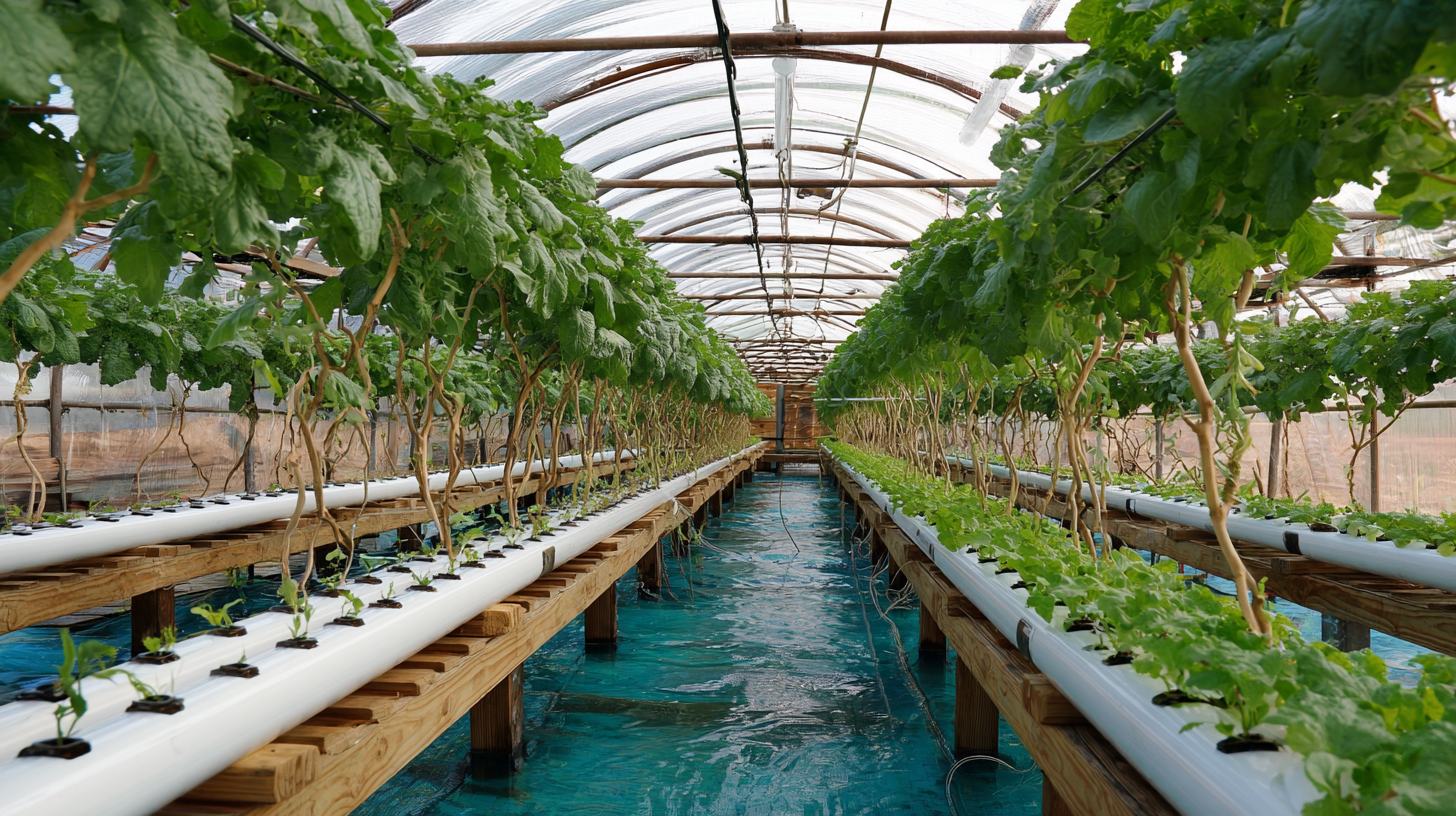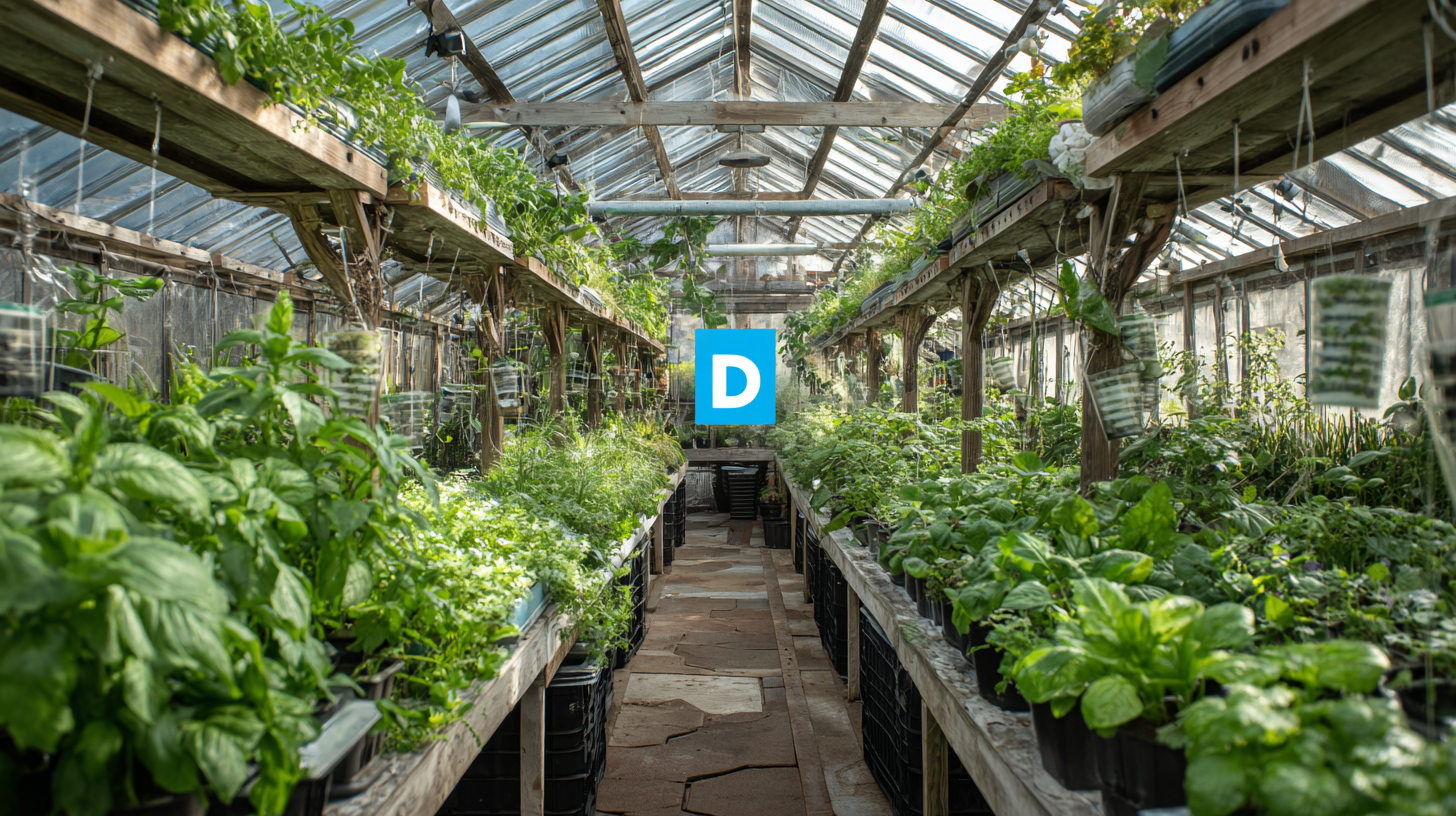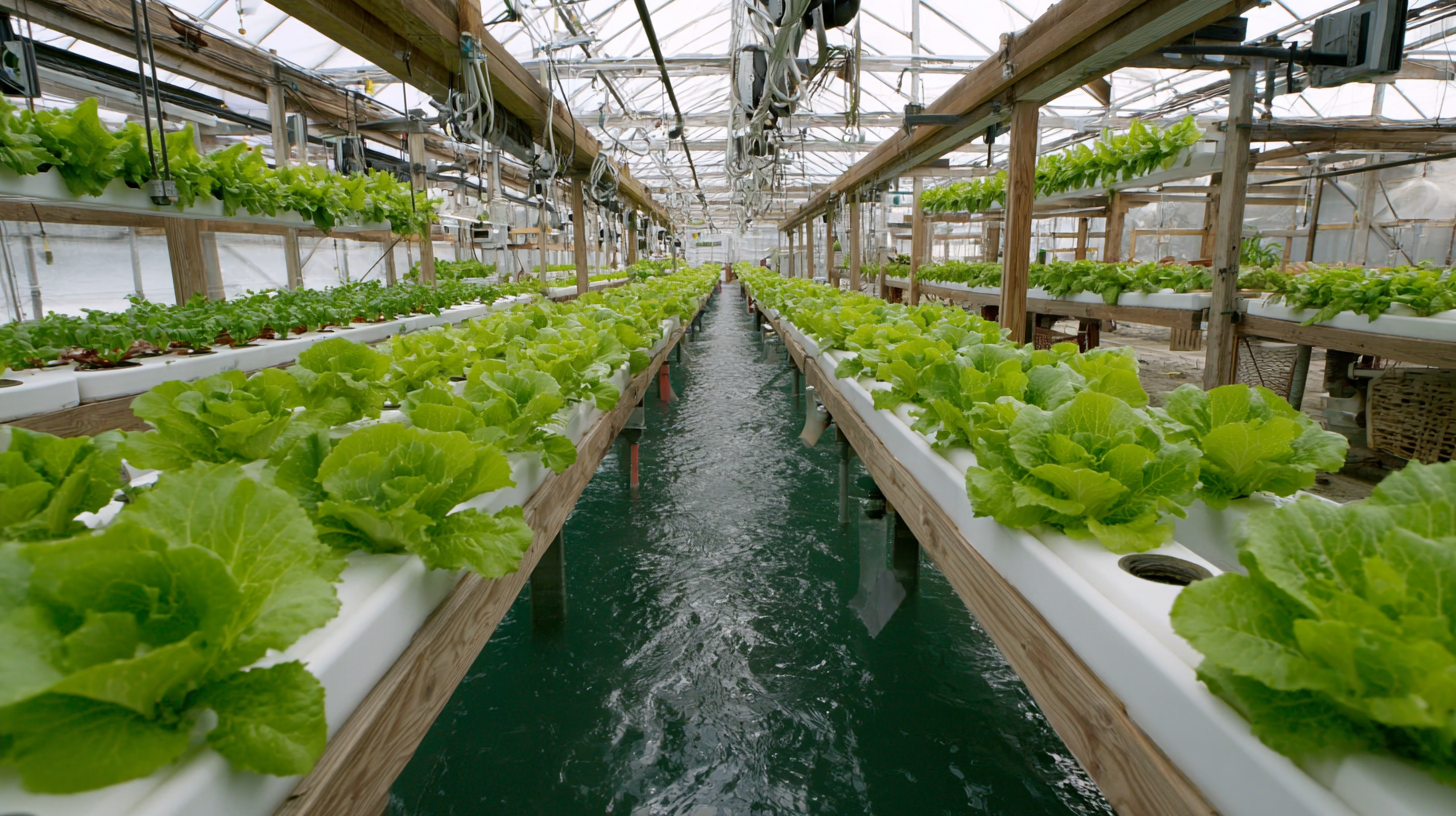
Unlocking the Advantages of the Best Aquaponics Greenhouse for Sustainable Farming Practices
In recent years, the demand for sustainable farming practices has surged, driven by the need to address environmental challenges and food security. The integration of aquaponics systems within dedicated structures, known as Aquaponics Greenhouses, has emerged as a compelling solution. According to a report by the Food and Agriculture Organization (FAO), aquaponics can potentially increase food production in urban areas by up to 100 times compared to traditional farming methods, while significantly reducing water usage by approximately 90%. This innovative approach not only fosters a symbiotic relationship between fish and plants, but it also minimizes chemical inputs and waste. As more farmers and entrepreneurs embrace the concept of sustainable agriculture, understanding the advantages of the best aquaponics greenhouse becomes essential for maximizing yields while preserving the planet's resources.

Essential Features of the Best Aquaponics Greenhouse for Sustainable Farming
The best aquaponics greenhouse stands out as a revolutionary solution for sustainable farming, combining aquaculture and hydroponics to create a self-sustaining ecosystem. Essential features of these greenhouses include optimal temperature control, efficient water circulation systems, and adequate light regulation. According to a report by the International Society for Horticultural Science, implementing a well-designed aquaponics system can yield up to 10 times more produce compared to traditional agriculture while using 90% less water.
When selecting the right aquaponics greenhouse, it's crucial to consider materials that enhance durability and efficiency. For instance, polycarbonate panels provide superior insulation, enabling a stable climate for plants and fish alike, thus promoting healthy growth. Regularly monitoring water quality and nutrient levels is also vital; utilizing automatic sensors can significantly streamline this process and ensure optimal conditions for both plants and fish.
Tip: Invest in a comprehensive aquaponics management software to keep track of your system’s parameters. This will help prevent potential issues before they escalate, ensuring a thriving ecosystem. Additionally, integrating renewable energy sources, such as solar panels, can greatly reduce operational costs and enhance sustainability.
Advantages of Aquaponics Greenhouses for Sustainable Farming
5 Key Benefits of Integrating Aquaponics into Traditional Farming Methods
 Aquaponics, a synergistic integration of aquaculture and hydroponics, is transforming traditional farming practices by offering numerous advantages that enhance sustainability. One significant benefit is the efficient use of water; according to the UN Food and Agriculture Organization, aquaponics systems can reduce water usage by up to 90% compared to traditional farming methods. This essential conservation is particularly vital in regions facing water scarcity, making aquaponics a compelling solution for future agricultural practices.
Aquaponics, a synergistic integration of aquaculture and hydroponics, is transforming traditional farming practices by offering numerous advantages that enhance sustainability. One significant benefit is the efficient use of water; according to the UN Food and Agriculture Organization, aquaponics systems can reduce water usage by up to 90% compared to traditional farming methods. This essential conservation is particularly vital in regions facing water scarcity, making aquaponics a compelling solution for future agricultural practices.
Another key advantage is the reduction of chemical fertilizers and pesticides. Research conducted by the National Center for Appropriate Technology shows that aquaponics can provide crops with all necessary nutrients through the waste produced by fish, promoting a healthier ecosystem while minimizing chemical runoff into water systems. Additionally, studies indicate that plants grown in aquaponics systems often yield higher harvests, as reported in the Journal of Agricultural Science, with some crops growing up to 30% faster than those cultivated in soil. This not only ensures food security but also enhances economic viability for farmers willing to adopt this innovative approach.
Top 3 Sustainable Practices Enabled by Aquaponics Greenhouses
Aquaponics greenhouses seamlessly integrate aquaculture and hydroponics, creating a symbiotic environment where fish and plants thrive together. One of the primary sustainable practices enabled by these systems is water conservation. Traditional farming can consume vast amounts of water, but aquaponics recirculates water, minimizing waste. Fish waste provides organic nutrients for plants, while the plants filter and clean the water for the fish, creating a closed-loop system. This method drastically reduces the need for freshwater, making it an ideal solution for areas facing water scarcity.
Another significant advantage of aquaponics greenhouses is their ability to promote local food production. By growing food in greenhouses, farmers can extend the growing season and produce crops year-round, reducing the reliance on imported goods and cutting down carbon footprints associated with transportation. This localized approach supports community resilience and food security. Additionally, with less land needed for farming due to the vertical growth potential of aquaponics, these greenhouses can be set up in urban areas, bringing fresh produce closer to consumers and improving access to healthy food options.
Lastly, aquaponics fosters biodiversity. By cultivating various plants alongside fish, these greenhouses encourage a diverse ecosystem, which can help control pests naturally and reduce the need for chemical fertilizers and pesticides. This practice not only enhances soil health and plant vigor but also supports a more balanced environment, vital for sustainable agriculture.
Unlocking the Advantages of the Best Aquaponics Greenhouse for Sustainable Farming Practices - Top 3 Sustainable Practices Enabled by Aquaponics Greenhouses
| Sustainable Practice | Description | Benefits |
|---|---|---|
| Water Conservation | Utilizes a closed-loop system where water is recycled between fish and plants. | Reduces overall water consumption by up to 90% compared to traditional farming. |
| Waste Reduction | Fish waste provides organic nutrients for plant growth. | Minimizes need for chemical fertilizers and promotes a healthy ecosystem. |
| Biodiversity Enhancement | Encourages the growth of multiple plant species alongside aquatic animals. | Increases resilience against pests and diseases while boosting yields. |
7 Reasons Why Aquaponics Supports Environmental Conservation Efforts
Aquaponics, the innovative combination of aquaculture and hydroponics, presents numerous advantages for sustainable farming that significantly contribute to environmental conservation. One of the primary benefits is its efficient use of resources. In a typical aquaponics system, water circulates between fish tanks and plant beds, allowing for a closed-loop system that drastically reduces water consumption—up to 90% less than traditional farming methods. This efficiency not only safeguards precious water resources but also minimizes runoff, thereby protecting local ecosystems from nutrient pollution.
Furthermore, aquaponics supports biodiversity by creating a harmonious environment for both aquatic and terrestrial organisms. By integrating fish, plants, and beneficial bacteria, these systems foster a balanced ecosystem that can withstand pests and diseases without the need for harmful pesticides. This natural pest management enhances soil health and promotes a diverse range of flora and fauna, contributing to the overall resilience of agricultural landscapes. As more farmers adopt aquaponics, they are not only improving the sustainability of their practices but also actively participating in the fight against climate change and habitat degradation.
The Cost-Effectiveness of Aquaponics: 4 Financial Advantages for Farmers
Aquaponics presents an innovative solution for sustainable farming, merging aquaculture with hydroponics to create a resource-efficient environment. One of the most compelling financial advantages for farmers is the reduced operational costs associated with aquaponics systems. By creating a closed-loop environment, farmers can minimize the need for commercial fertilizers and pesticides, leading to significant savings. This eco-friendly method not only preserves resources but also enhances crop yield and profit margins.
Another financial benefit is the ability to grow a variety of crops year-round, which increases revenue opportunities. With an aquaponics greenhouse, farmers can produce fresh vegetables and fish continuously, even in regions with harsh climates. This consistent production stream allows for better cash flow management and reduces reliance on seasonal markets, giving farmers a competitive edge.
Tips for maximizing your aquaponics profitability include implementing vertical gardening techniques to save space and optimizing system design for efficiency. Regularly monitoring and adjusting the nutrient levels in your system ensures that both plants and fish thrive, ultimately boosting output. Adopting these strategies can help you fully leverage the cost-effectiveness of aquaponics, ensuring a sustainable and lucrative farming operation.

